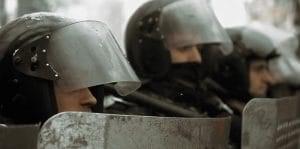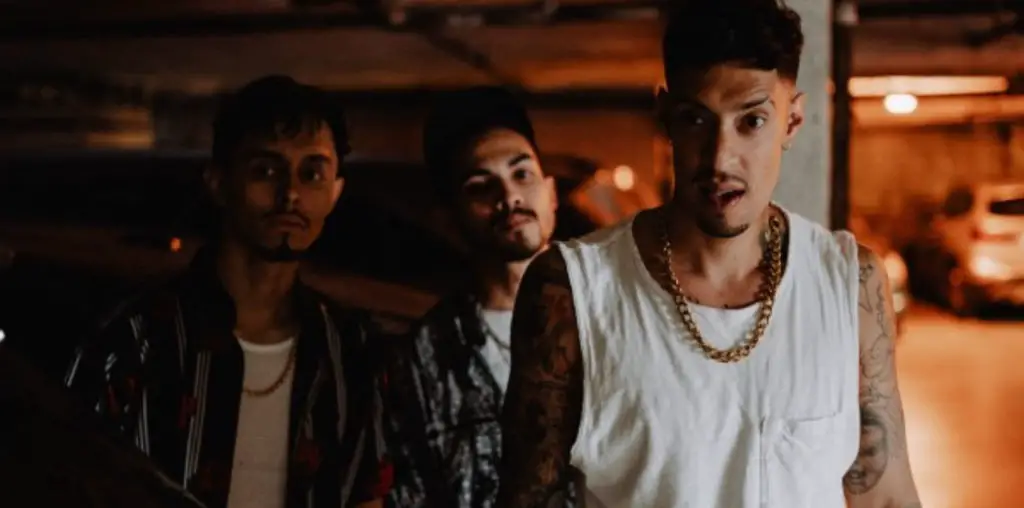
As a modern American media consumer, most of the stories we encounter about international conflicts – by the time we read about them online or watch them play out on the nightly news – are well massaged to meet often less than opaque political ends. Thus, one of the great powers of documentary filmmaking is that it provides the viewer with a direct, unfiltered connection to an issue at hand. While the documentary filmmaker is not free of bias, we nonetheless often get a story that is more approximating “a truth,” if not the “truth.” Thus, in Mark Jonathan Harris and Oles Sansin’s gripping doc about the Russian invasion and occupation of Ukraine, we get a deeply intimate, and mostly unvarnished perspective about a conflict in which a sovereign nation was invaded by another and the ragtag army of non-professionals who rose up to fight one of the greatest military powers on earth. It is a brutal yet affecting film which, while wearing its agenda proudly on its sleeve, imparts a sense of hope and even uplift.
The film opens with a shot of a young, slightly haggard man in a military uniform. His name is Andriy “Bohema” Sharaskin. We learn that he was the director of a children’s theater. “But,” he stoically recounts, “on February 18th, they started killing people. It was a breaking point.” From there the filmmakers begin moving backward and forward in time, retelling an abbreviated history of Ukraine. “The endlessly fertile black earth. For centuries, Ukraine’s blessing but also its curse,” a voiceover intones. For centuries, Ukraine was invaded and occupied – first by the Mongols, then the Poles, then the Turks, then the Germans, and finally the Russians – all hungry for the breadbasket that was the Ukraine. It’s a sad, sordid history. But on December 1, 1999, after the fall of the Soviet Union, something remarkable happened when the Ukraine held a popular election that resulted in over 90% of the populous voting for independence from Russia.

“People had never died in the name of a united Europe before…”
Unfortunately, a puppet of the Russian government, the wily Viktor Yanukovych, steals the election. Briefly removed by the bloodless Orange Revolution in 2004, Yanukovych once again worms his way into power and remains in this stead until late 2013. Sick of his autocratic rule and desperate to join the ascendant Europe, spontaneous protests organized online and led by the country’s youth erupt in the Kyiv’s Maidan Square. After months of resistance followed by deadly crackdowns at the hands of the police – from which the filmmakers do not avert their gaze, showing young people being mercilessly beaten and shot down in the street – Yanukovych flees for Russia.
Ukrainians were jubilant. “People had never died in the name of a united Europe before,” observes a sober academic scholar. “Never before had there been a movement this far in the east of Europe about the rule of law.” But, the celebration was to be short-lived as a week later the Russian army – or rather a shadow force of unflagged Russian troops, armaments, and tanks – acting on the orders of the Kremlin invaded eastern Ukraine and soon after the Crimean region bordering The Black Sea. And, thus, a long-simmering powder keg is relit. From this point, the filmmaker’s recount how the Ukrainian people miraculously amassed a fighting force of non-professionals – teachers, doctors, rabbis, lawyers, the rich, the poor, the old and the young – to fight the invading force coming from the east. “A Ukranian can be pushed down for a long time,” says one soldier, “but when his forehead touches the ground, he’ll rise up and no one will stop him.”
For the remainder of the documentary, using breathtakingly close combat footage, the filmmakers detail this David and Goliath struggle. The most harrowing of these battles take place in the ruined Doesk Airport in the far east of the county where an outmanned and outgunned Ukrainian company fight a vicious battle with an unseen but ever-present enemy. The battle scene push cinema verite to its limit, creating tension that I have not felt since viewing the masterful 2010 Tim Hetherington/Sebastian Junger Afghanistan war film Restrepo. I was equally chilled when – after the Russians inadvertently down Malaysia flight MH17 filled with innocent civilians – the filmmakers detail how Russian media and propaganda sources worked meticulously to muddy and change the narrative. I kept thinking about Russia’s recent meddling in the 2016 Presidential election and how, in some sense, Ukraine provide them with a superb proving ground to hone both their military and subterfuge skills.

“…a very powerful film that clarifies a conflict that many remain confused about or wholly unaware…”
As the fighting begins to reach a detente and the film fixates more and more on the post-war political posturing, it does run a bit out of steam. Nonetheless, it was heartwarming to see the theater teacher, whose interview opened the film, return to his theater and into the arms of his young students. As the film closes, the viewer is informed that, while a ceasefire was signed between the two parties in 2015, Russia still occupies several hotly contested regions in the far east of the country. This tinderbox, it seems, is still readily primed for the next spasm of bloodshed and violence.
Overall, Breaking Point: The War for Democracy in the Ukraine is a very powerful film that clarifies a conflict that many remain confused about or wholly unaware of. The cinematography and pacing are routinely superb and the characters that the filmmakers choose to drive the narrative forward are charismatic and easy to identify with. While the pro-Ukrainian agenda of the film was clear from the outset, it is a perspective that is sorely needed in an age of spin where getting many sides of a story is an often fool’s errand.

Breaking Point: The War for Democracy in the Ukraine (2017) Directed by Mark Jonathan Harris and Oles Sanin. Written by Mark Jonathan Harris and Paul Wolansky.
4 out of 5 stars

